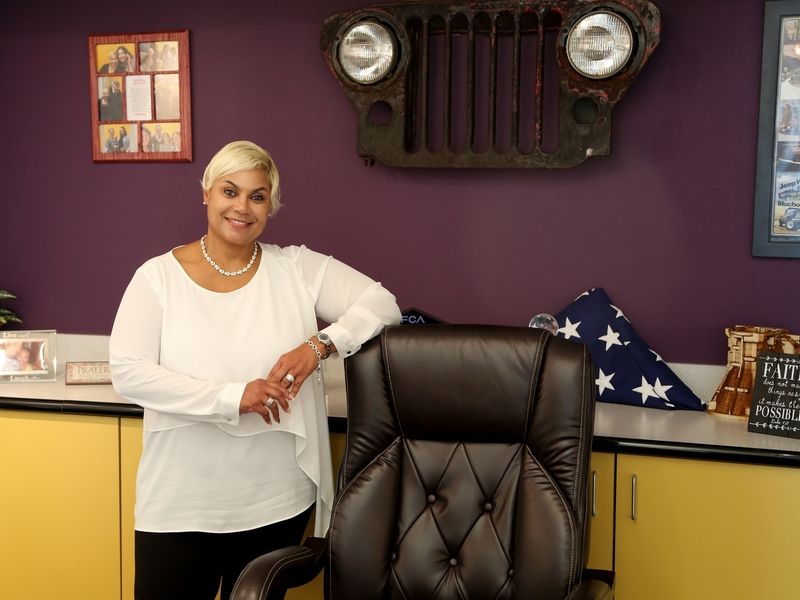
Dierdre “Dee Dee” Fultz was pregnant and discussing her plans with her boss at the Chrysler manufacturing plant. “I remember he said to me, ‘I’ve never managed a woman before. How does this work? Do you come back after maternity leave?” she says.
“We’ve come a long way in the past 20 years,” says Fultz with a laugh.
To begin with, Fultz is now the boss— the plant manager for Stellantis’ Indiana Transmission Plant in Kokomo.
She also points to workplace advances like paternity leave and more flexible schedules for working parents, as well as the “progressive culture” she says the new Stellantis is trying to build. But she is passionate about the industry’s need to continue creating working conditions that support women. “We in leadership need to be flexible, to consider the needs of a person—whether that’s a man or a woman. How can you be flexible enough to attract them into the industry, and also keep them in the industry?” she says. “I was a single parent, trying to take care of a child and working maybe 80 hours a week. It’s not easy. We have to help create more of a balance between life and work for our employees.”
Fultz is one of two women Stellantis plant managers (alongside Tania Young, who she says is a personal role model), and was recognized among the 2020 Automotive News 100 Leading Women in the North American Auto Industry.
The youngest in a family of five, she credits her mom as her first role model and mentor. “After my dad died in an industrial accident when I was 11, my mom was left to raise five kids on her own,” she says. “She was the first woman detective in the Indianapolis police child abuse unit—but she was always there cooking dinner for us. And she saw that every one of us got a college degree.”
After graduating with a mechanical engineering degree from Indiana University-Purdue University at Indianapolis, Fultz went to work at locally based Eli Lilly & Co. The auto industry wasn’t on her radar until a family friend told her the industry needed female engineers.
Fultz landed a job at the Chrysler Detroit Axle facility in downtown Detroit. “It was in a risky area,” she remembers. “I got to the plant and thought: What did I do? I was about to call my old boss and ask for my job back, but my brother told me to give it a couple of weeks.
“Once I got into Chrysler, I found it was very fast-paced and addictive. People who are in manufacturing either love it or hate it, and I am a manufacturing kind of rat.”
A decade into her automotive career, she says, “I had been promoted a couple of times, moved to production…but when I actually got promoted to manufacturing manager, I thought, ‘Wow.’ I paused and raised my head,” says Fultz. She savored her success.
“But then I realized: I don’t see any other women like me. I don’t see another woman counterpart in this area,” she says. “Something is wrong with this picture.”
She still is frustrated by the lack of young women in the manufacturing side of the industry. She says her company brings local high schoolers into the plant, rotating the students through different areas to sample possible manufacturing careers. But in four years and 60 students, she remembers only two young women taking advantage of the opportunity.
“I don’t understand what we’re not doing,” she says. She spoke at a STEM summer camp for girls, and when she asked the campers about their future plans, “It was doctor, veterinarian…no one wants to go into manufacturing,” she says. “We need to do more to educate younger kids before they get to high school, expose them to what we do.”
For those young women who are interested in an auto career, Fultz offers two pieces of advice. “First, have confidence in yourself,” she says. “We as women tend to doubt ourselves. We feel we have to be perfect, that we have to ace the test all the time. I wish when I was younger that I’d told myself over and over: Never underestimate yourself. Never doubt yourself.”
Second, she says, “I remember being young and feeling fragile. I wish someone had told me to not take everything so seriously. Have thick skin.”